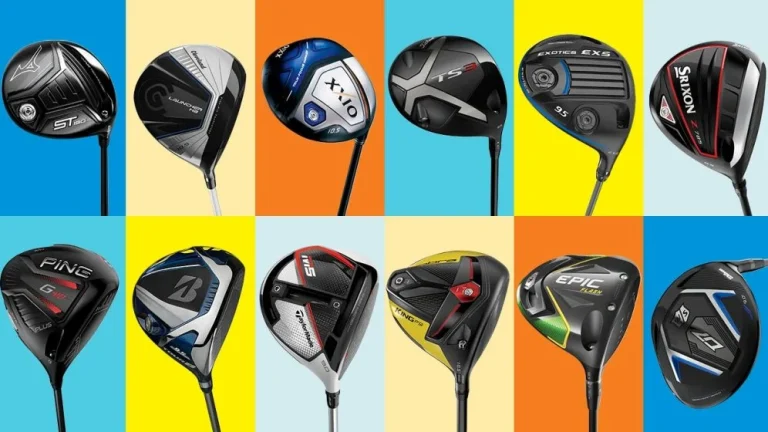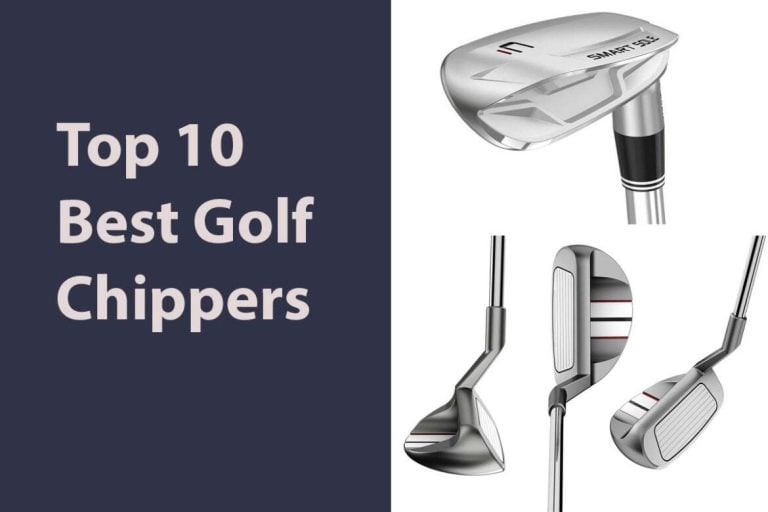A Nostalgic Round: Discovering the Best Vintage Golf Clubs
Key takeaway:
- Factors to consider when evaluating vintage golf clubs include the materials used, rarity and collectability, manufacturer and brand, and the club’s significance in golf history.
- The top 10 most valuable vintage golf clubs include the Long-Nose Putter designed by Andrew Dickson, vintage clubs signed by famous players, luxury brand golf clubs, clubs with unusual features or patented designs, and clubs with uncommon phrases or names on the back.
- To determine the value of an antique golf club, research recently sold clubs, consult books and online resources, and seek expert opinions or appraisals.
- Common vintage golf clubs and their approximate values include clubs with wooden shafts and clubs with aluminum caps and nickel/stainless steel heads.
Vintage golf clubs have become super popular with golfers recently. These clubs, from earlier eras of the game, give a unique and nostalgic playing experience. Golfers love the classic designs and craftsmanship of vintage clubs, appreciating the detail and quality that’s often missing from modern gear. Using vintage clubs, players can connect with golf history and add style to their game.
Golf has changed over time – so have club materials and tech. Vintage golf clubs are wood and forged iron – a contrast to the high-tech modern clubs. The traditional materials give a feeling of tradition and authenticity that many golfers love. Plus, vintage clubs need more skill and finesse for optimal performance – perfect for golfers who want a challenge.
Using vintage clubs offers the chance to appreciate and explore different club designs from different eras. Each era has its own style and characteristics – so there are loads of clubs to choose from. From hickory-shafted clubs of the early 20th century to steel-shafted clubs of the mid-century, golfers can learn about golf equipment history. This can help players to enhance their game and gain a deeper understanding of the sport.
Factors to Consider When Evaluating Vintage Golf Clubs
When evaluating vintage golf clubs, several factors come into play. We must consider the materials used, rarity and collectability, manufacturer and brand, as well as their significance in golf history. Each sub-section will explore these aspects, providing valuable insights that will aid in assessing the value and appeal of vintage golf clubs.
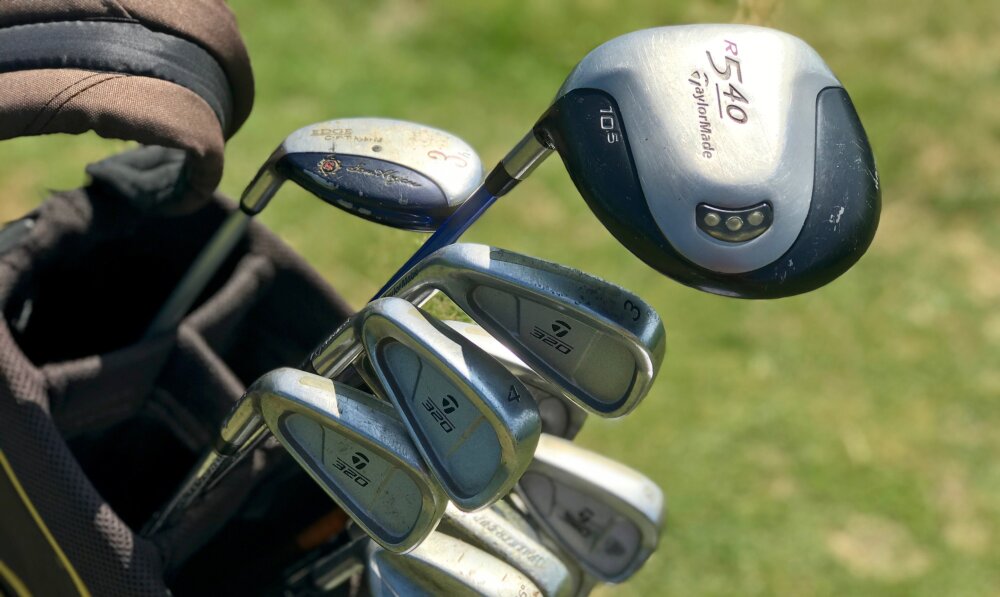
Materials Used
Materials found in vintage golf clubs are key to their worth and desirability. Reference data reveals which materials make them valuable.
- 1. Wooden Shafts: Hickory or ash shafts are rare and have historical value. They provide a special feel and look.
- 2. Aluminum Caps and Nickel/Stainless Steel Heads: This combination of materials enhances durability and performance.
- 3. Unmarked Faces and Unique Head Shapes: These clubs often have intricate designs or tech, making them stand out.
- 4. Luxury Brand Golf Clubs: Luxury brands are known for top-notch craftsmanship and materials (e.g. exotic woods or precious metals).
Each club may have unique details, so these factors are only a guide. Knowledge of materials helps collectors accurately judge value and historical importance.
Rarity and Collectability
Vintage golf clubs can be highly valued due to their rarity and collectability. Materials, manufacturer, brand, and golf history all factor into this.
Unique head shapes, unmarked faces, and patented features make certain ones especially sought-after. Luxury brands are also prized.
These clubs may have thick-necked wood construction, aluminum caps on handles, or nickel/stainless steel heads. This adds uniqueness that increases value.
Phrases/names on the back give them character and individuality.
Rarity and collectability play a large role in determining value. Collectors should consider materials, manufacturer/brand, golf history, and any unique features/design elements.
Manufacturer and Brand
The manufacturer and brand of a vintage golf club are crucial when assessing its value and collectability. These features can make a club more desirable, thus increasing the market demand.
Certain manufacturers have a great reputation and a noteworthy history. This increases the desirability of their clubs, making them more valuable. Check out some renowned manufacturers and brands of vintage golf clubs below:
| Manufacturer/Brand | Description |
|---|---|
| Hickory Stick | Making wooden shafted clubs |
| Spalding | Famous American sporting goods company |
| Tom Stewart | Scottish clubmaker famous for craftsmanship |
| Wilson Staff | Well-regarded brand for quality golf equipment |
| MacGregor | Producing high-quality clubs used by pros |
There are many more! Every manufacturer has unique characteristics, craftsmanship, and innovation that influence their value.
Rarity, materials used, and historical significance also affect the value of vintage golf clubs. To determine the manufacturer and brand, search for markings or logos on the club head or shaft. Research books, online resources, or consult experts for more info.
Collectors can make informed decisions about acquiring valuable vintage golf clubs. Learning these factors will help enthusiasts find rare and collectible pieces with significance in the sport’s history.
Significance in Golf History
Golf clubs with a special history hold a special value for collectors and fans. Understanding their importance is key when assessing vintage clubs.
These clubs show the changes and new ideas that have shaped the sport. Each design highlights advancements in materials and features. By studying these clubs, we can see how golf has grown and adapted to players.
Plus, certain clubs have ties to legendary players or significant events. Clubs signed by famous players or designed for renowned tournaments are especially appealing. They act as physical links to iconic moments and those who have left a lasting mark on the sport.
By appreciating the significance of vintage golf clubs, we can explore not only the mechanical aspects but the stories too. Knowing the context helps us value these treasures for their role in shaping the game we know today.
From prized putters to signed classics, these vintage golf clubs with their historical value will have you ready to splurge!
Top 10 Most Valuable Vintage Golf Clubs
Discover the fascinating world of vintage golf clubs as we uncover the top 10 most valuable gems in existence. From iconic designs to unique features, each sub-section will highlight remarkable golf clubs that have stood the test of time. Get ready to delve into the history, craftsmanship, and value of these prized possessions. Prepare to be amazed by the Long-Nose Putter designed by Andrew Dickson, vintage clubs signed by famous players, luxurious brand collections, and much more.
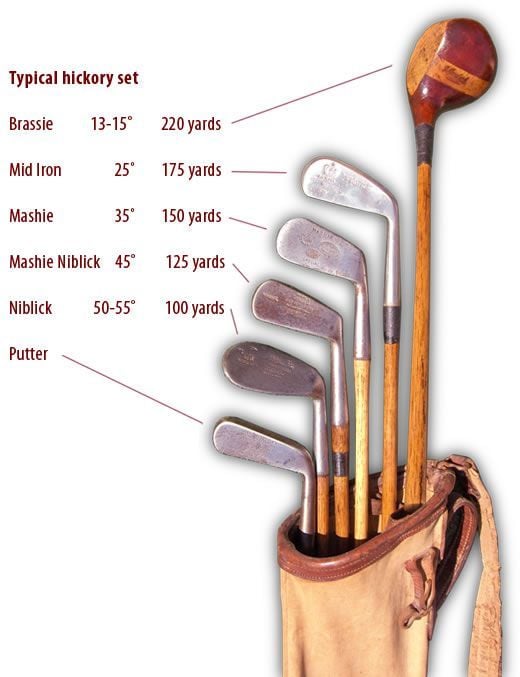
Long-Nose Putter designed by Andrew Dickson
The Long-Nose Putter designed by Andrew Dickson is much sought after by collectors. Its long nose design stands apart from other putters of that era. Its craftsmanship and attention to detail make it a thing of beauty. It has both functionality and aesthetic appeal. This putter is a tribute to Andrew Dickson’s skill.
It may feature engravings or special markings which add to its value. Any patented features incorporated into its construction enhance its rarity. Collectors value these aspects as they add to its historical significance and cultural importance in golf.
Get a vintage golf club signed by a famous player. Swing like a champion – or feel like one!
MacGregor Tourney Persimmon Woods
Overview: During the golden era of golf, MacGregor Tourney Persimmon Woods were the pinnacle of craftsmanship and performance. Made from genuine persimmon wood, these clubs were favored by numerous legends of the game.
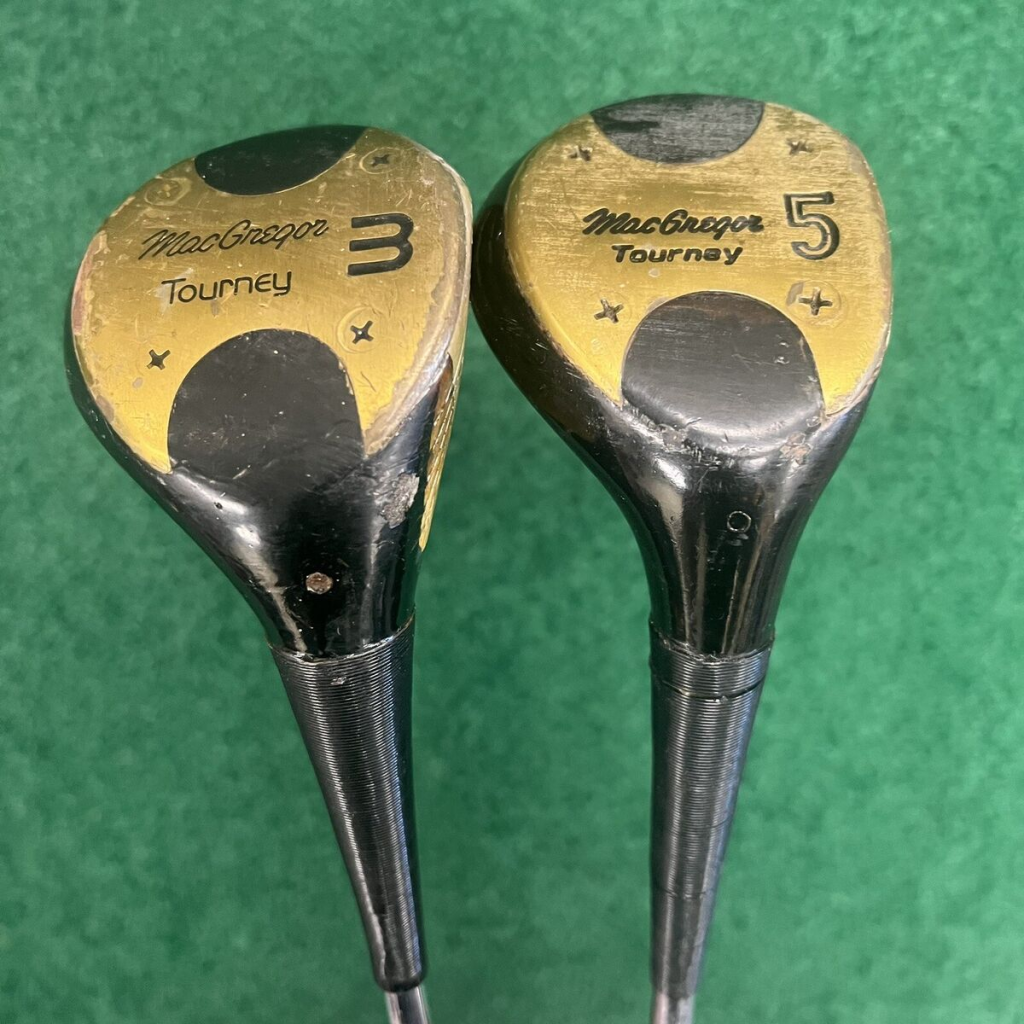
Highlights:
- Craftsmanship: Each club was meticulously crafted, offering unparalleled feel and control.
- Legacy: Used by legendary players, the Tourney Persimmon Woods have been part of countless historic moments in golf.
Wilson Staff Dyna-Powered Irons
Overview: The Wilson Staff Dyna-Powered irons, introduced in the 1960s, became a symbol of innovation and excellence. These irons offered golfers precision and playability that was ahead of their time.
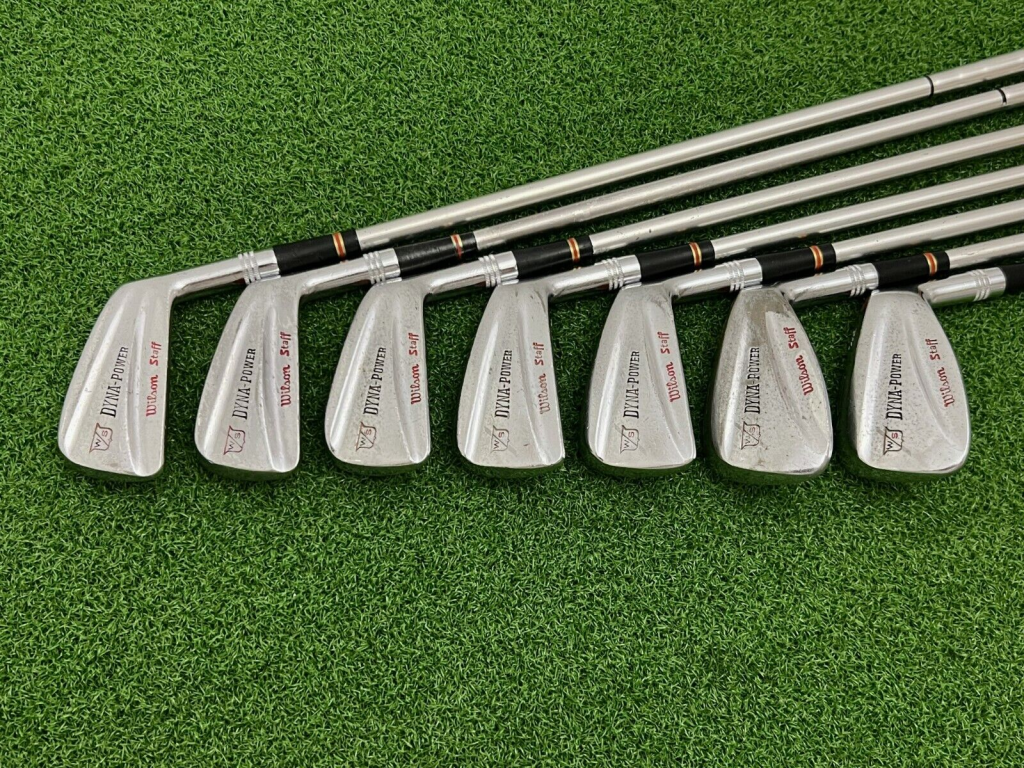
Highlights:
- Innovation: Featuring a “Fluid Feel” insert, these irons provided a soft yet solid impact sensation.
- Dominance: Dominating professional tours, they were the choice of many top players, underscoring their quality and performance.
Ping Eye2 Irons
Overview: Although newer than other entries on this list, the Ping Eye2 Irons have earned their place in the vintage category due to their revolutionary design and enduring popularity.
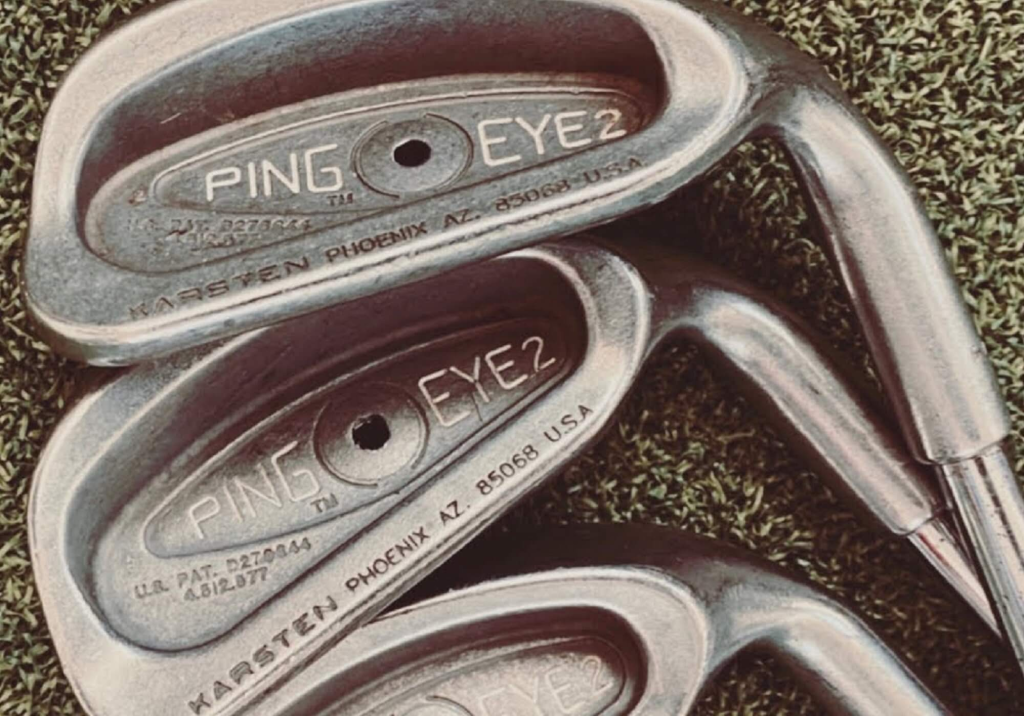
Highlights:
- Design: Their distinctive look and feel, coupled with the introduction of perimeter weighting, set new standards for iron design.
- Impact: The Eye2s significantly influenced club manufacturing, making them a must-have for collectors and enthusiasts of golf history.
Titleist Acushnet Bullseye Putter
Overview: The Acushnet Bullseye Putter by Titleist is an iconic piece of golfing history, celebrated for its simple yet effective design. Its distinctive brass head and fluted shaft have made it a favorite among purists.
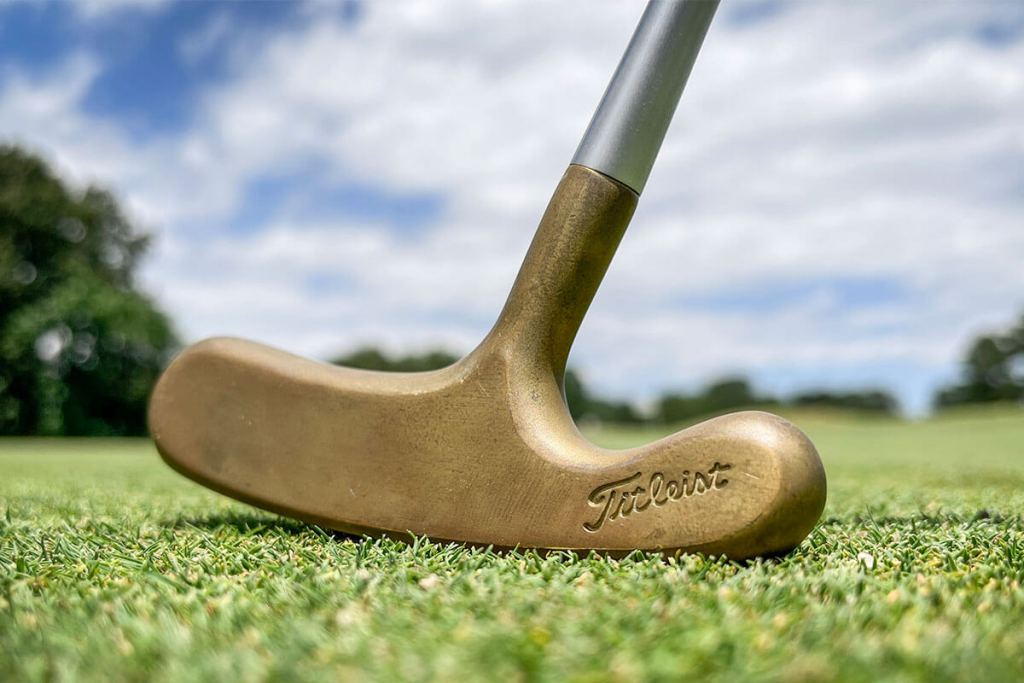
Highlights:
- Simplicity: The Bullseye’s design is a testament to the idea that simplicity can yield perfection on the greens.
- Popularity: Its widespread use across generations of golfers speaks volumes about its effectiveness and timeless appeal.
Spalding Top-Flite Professional Model
Overview: The Spalding Top-Flite Professional Model golf balls were revolutionary upon their release. As the first two-piece golf balls, they offered a combination of distance and durability that was unmatched at the time.

Highlights:
- Innovation: Introduced a new era in golf ball technology, changing the game for players at all levels.
- Legacy: Though not a club, the Top-Flite Professional Model’s impact on the game earns it a spot among vintage golf treasures.
How to Determine the Value of an Antique Golf Club
Determining the value of an antique golf club can be a fascinating journey. In this section, we’ll explore effective methods to assess the worth of vintage golf clubs. From researching recently sold clubs to consulting books and online resources, and even seeking expert opinions or appraisals, we’ll delve into the strategies that can help you uncover the true value of these cherished collectibles. Get ready to uncover the secrets behind antique golf club valuation.
Research recently sold clubs
Researching recently sold clubs? You need to analyze data from clubs sold in the past. This provides insight into market value and demand. By examining sale prices and other info, collectors and enthusiasts can understand trends and factors that affect the value of these clubs.
Organize the data in a table. Include columns such as club model, manufacturer, condition, sale price, and any unique features. This way, it’s easy to identify patterns and trends that help determine the value of an antique golf club.
Plus, research on recently sold clubs helps you stay up-to-date on market dynamics and value fluctuations. This is crucial when making purchases or evaluating a vintage golf club in your collection.
Time to get researching! Determining an antique golf club’s value needs serious research skills.
Consult books and online resources
Consult books and online resources to determine the worth of an antique golf club. Experts’ books, databases, and forums give info and ideas on the club’s historical past, rarity, and collectability.
Also, these resources provide details on the prices of similar clubs sold. By studying them, collectors can guess the potential value of their own clubs and spot trends.
Moreover, books and online resources contain descriptions and pics of antique golf clubs. This helps collectors recognize unique features that may increase the worth of a club.
When consulting these resources, consider the authority and repute of the sources. Look for books written by recognized experts or websites visited by knowledgeable collectors. Forums and communities for antique golf clubs are also valuable sources.
By consulting reliable books and online resources, collectors can get a better understanding of factors that affect the worth of a club. These include materials used, rarity, significance, manufacturer reputation, unique features, and market trends. It’s essential to use these resources well to assess the worth of an antique golf club accurately.
Get a second opinion on the value of your vintage golf clubs, ’cause one man’s trash is another man’s treasure—unless it’s a rusty old putter.
Conclusion
Vintage golf clubs are a hit with golfers these days. Their unique design and historic significance make them special. Plus, they’re collectibles and offer a chance to play the game in its old-fashioned form.
But, how do you get the best vintage golf clubs? Research and evaluate them. Look into their condition, craftsmanship, and performance.
Condition is key. The reference data shows the value of well-preserved clubs with original features. Craftsmanship is also important. Find clubs made by reputable manufacturers who know how to make quality, durable equipment.
Performance is essential. Again, the reference data emphasizes evaluating how the clubs play on the course. Test the playability–distance, accuracy, feel–and look for clubs that give consistent performance and make your game better.
In the end, research and evaluation lead to the best vintage golf clubs. Grab these collectibles and enjoy the history of the game while playing it.
Some Facts About Best Vintage Golf Clubs:
- ✅ Less than 5% of old golf clubs with wooden shafts have collectible value beyond being decorative. (Source: Team Research)
- ✅ Common vintage golf clubs are worth $10-$20, with decreased demand due to the internet flooding the market. (Source: Team Research)
- ✅ Rare antique and vintage golf clubs can have high values, such as a long-nose putter designed by Andrew Dickson in the 1750s selling for $181,000. (Source: Team Research)
- ✅ Common vintage golf clubs have aluminum caps on the handles, nickel or stainless steel heads, and common phrases or names on the back. (Source: Team Research)
- ✅ Rare golf clubs have unique head shapes, unmarked faces, unusual patented features, and thick-necked wood clubs. (Source: Team Research)
FAQs about Best Vintage Golf Clubs
1. What factors contribute to the value of vintage golf clubs?
Factors that contribute to the value of vintage golf clubs include rare and unique head shapes, unmarked faces, unusual patented features, and thick-necked wood clubs. Additionally, vintage clubs signed by famous players or made by luxury companies can also have higher values.
2. Are antique golf clubs generally valuable?
Antique and vintage golf clubs are generally not worth much, but some rare clubs can fetch high prices at auction. Less than 5% of old golf clubs with wooden shafts have collectible value beyond being decorative. Common vintage golf clubs, however, are worth around $10-$20 due to decreased demand caused by the internet flooding the market.
3. How can I determine the value of an antique golf club?
To determine the value of an antique golf club, it is essential to compare it to recently sold clubs and conduct research in books and online. Resources for researching antique golf clubs include books like “Antique Golf Collectibles: A Price and Reference Guide” and websites like Timewarp Golf and The Golf Heritage Society.
4. Can you provide examples of rare and valuable vintage golf clubs?
Examples of rare and valuable vintage golf clubs include a long-nose putter designed by Andrew Dickson in the 1750s, which sold for $181,000. Another example is a collection of highly valuable clubs from the Jeffery B. Ellis collection, which sold for record-breaking prices. These rare clubs had unique characteristics such as unusual markings, complex configurations, and uncommon materials.
5. Where can I find antique golf clubs?
You can find antique golf clubs at antique dealers, niche collectibles stores, and online platforms specializing in vintage sports equipment. Additionally, auctions and estate sales can sometimes offer rare golf clubs for sale.
6. Are there any recent popular vintage golf clubs used by professional players?
Some recent popular vintage golf clubs used by professional players include Yani Tseng’s Adams Golf’s Idea Tech a4 irons, Bernhard Langer’s Ben Hogan Apex irons, and Sandra Gal’s Callaway FT-5 driver. These clubs have unique designs and features like quad cavity-back design, carbon steel construction, and specific weight positioning for enhanced performance.
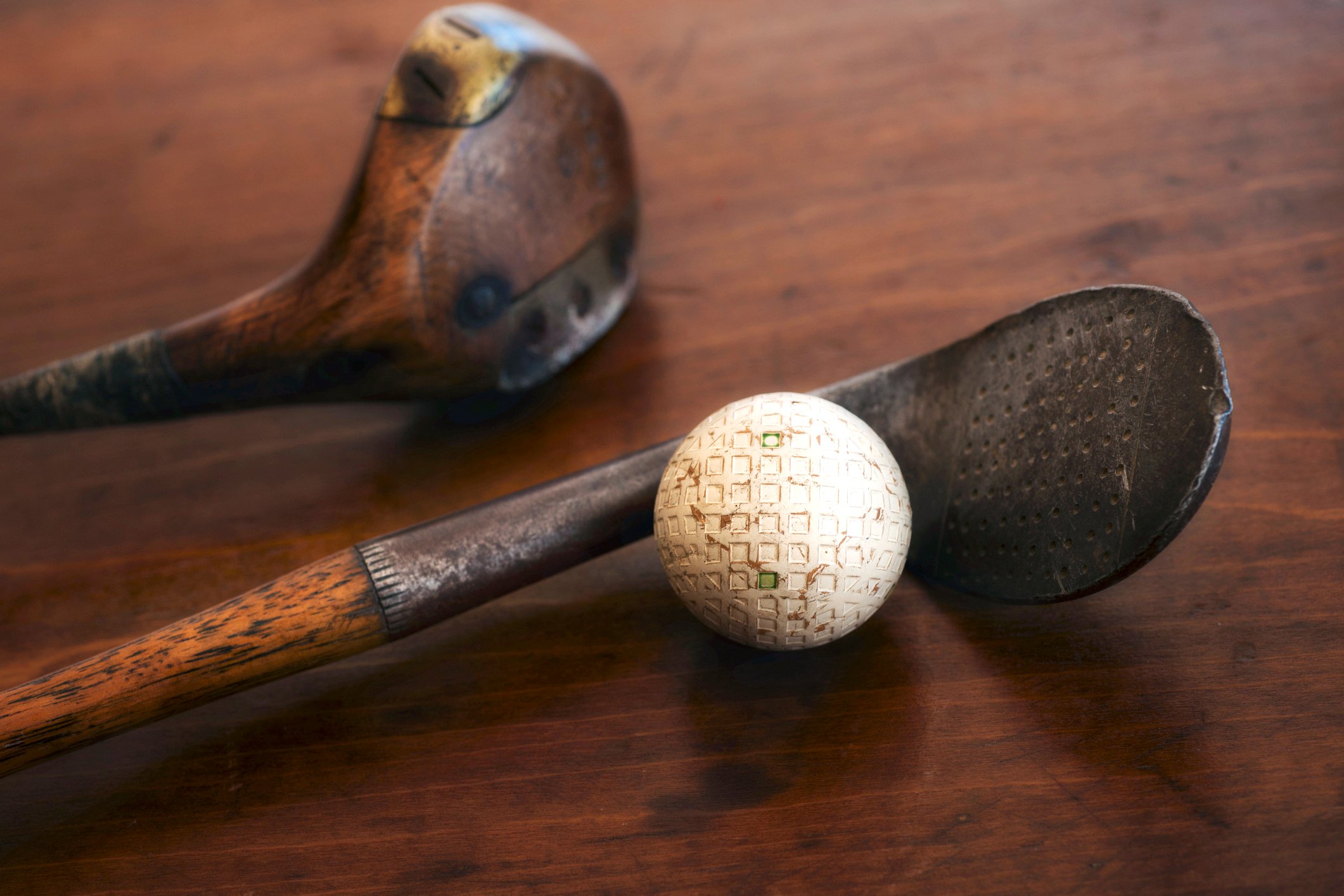



![Elevating Your Grip: A Comprehensive Winn Pro X review [2024]](https://www.fairwayfindings.com/wp-content/uploads/2023/07/Winn-Pro-X-review.jpeg)
